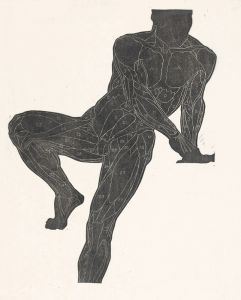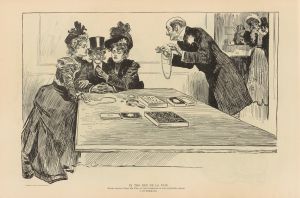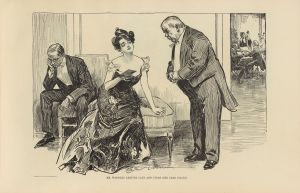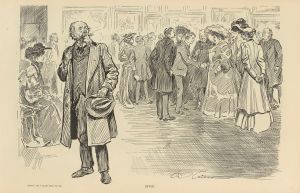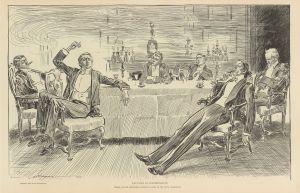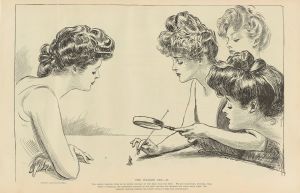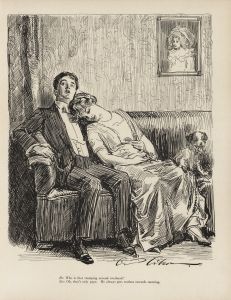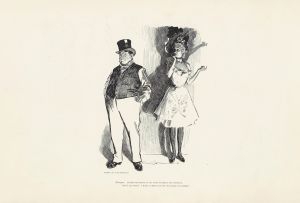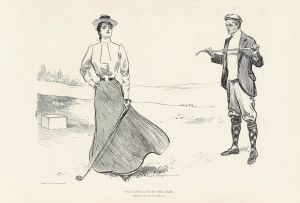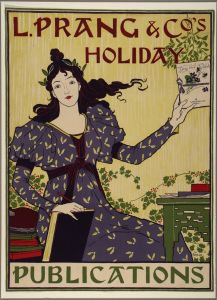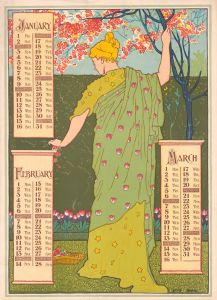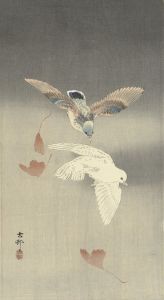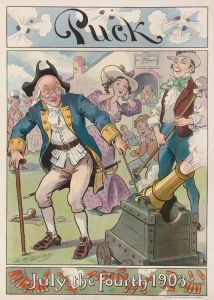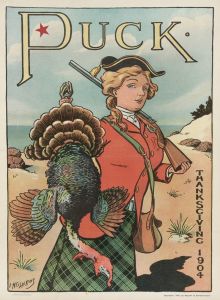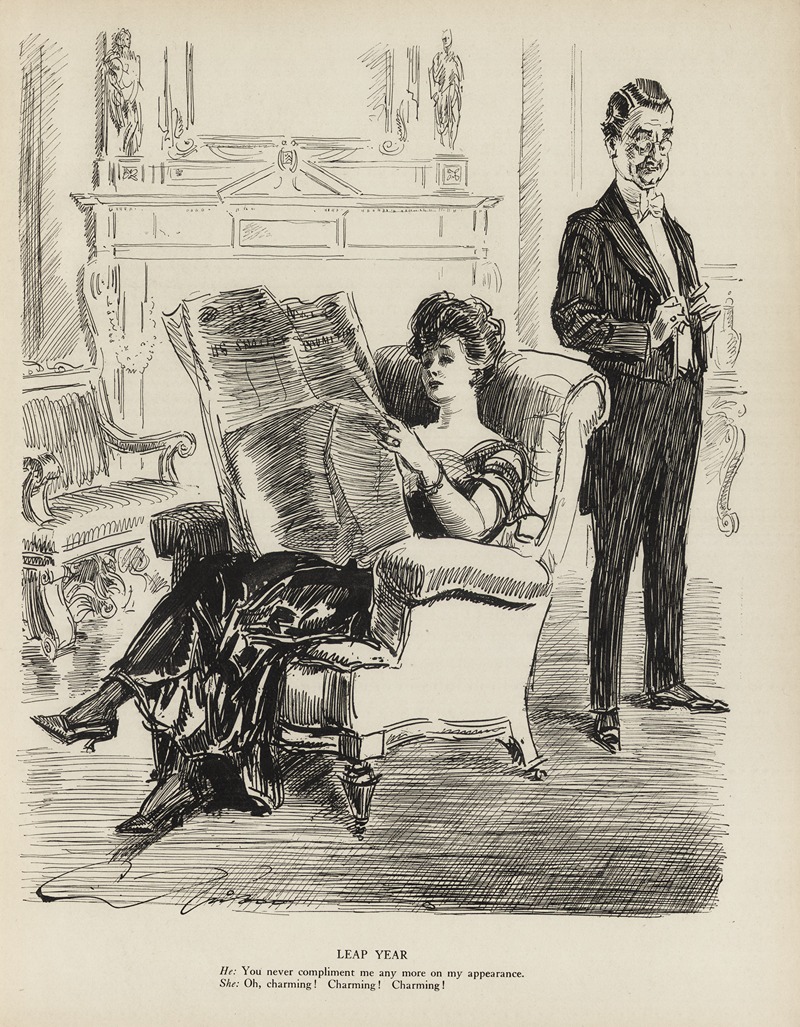
Leap Year
A hand-painted replica of Charles Dana Gibson’s masterpiece Leap Year, meticulously crafted by professional artists to capture the true essence of the original. Each piece is created with museum-quality canvas and rare mineral pigments, carefully painted by experienced artists with delicate brushstrokes and rich, layered colors to perfectly recreate the texture of the original artwork. Unlike machine-printed reproductions, this hand-painted version brings the painting to life, infused with the artist’s emotions and skill in every stroke. Whether for personal collection or home decoration, it instantly elevates the artistic atmosphere of any space.
Charles Dana Gibson was an influential American illustrator best known for creating the iconic "Gibson Girl," a representation of the idealized American woman at the turn of the 20th century. One of his notable works is "Leap Year," a drawing that captures the social dynamics and gender roles of its time with humor and insight.
"Leap Year" was created during a period when Gibson's illustrations were widely published in popular magazines such as Life, Harper's Weekly, and Scribner's. These publications helped to cement his reputation as a leading illustrator of his era. The drawing reflects Gibson's keen observation of societal norms and his ability to infuse his work with both satire and charm.
The concept of "Leap Year" is rooted in the tradition that women could propose marriage to men during a leap year, a custom that dates back several centuries. This tradition provided a humorous reversal of the typical courtship roles, and Gibson's illustration captures this theme with wit. In "Leap Year," Gibson portrays women taking the initiative in romantic pursuits, a playful commentary on the shifting dynamics of gender roles at the time.
Gibson's style is characterized by its clean lines, attention to detail, and expressive characters. His illustrations often depicted scenes of social interaction, fashion, and the leisure activities of the upper middle class. "Leap Year" is no exception, showcasing his ability to convey complex social commentary through simple yet effective imagery.
The "Gibson Girl" itself, which features prominently in many of Gibson's works, including "Leap Year," was a cultural phenomenon. She was depicted as independent, confident, and fashionable, embodying the changing attitudes towards women's roles in society. The "Gibson Girl" became a standard of beauty and sophistication, influencing fashion and popular culture in the early 1900s.
Gibson's work, including "Leap Year," played a significant role in shaping public perceptions of gender and social norms. His illustrations were not just artistic expressions but also reflections of the cultural and social changes occurring in America during his lifetime. Through his art, Gibson offered both a critique and celebration of the society he observed.
While specific details about the creation and reception of "Leap Year" are limited, the drawing remains an example of Gibson's talent for capturing the spirit of his time. His work continues to be studied and appreciated for its artistic merit and its insight into the cultural history of the United States.
In summary, "Leap Year" by Charles Dana Gibson is a notable illustration that humorously explores the theme of women proposing to men during a leap year. It exemplifies Gibson's skill in using art to comment on societal norms and his enduring influence on American culture.





